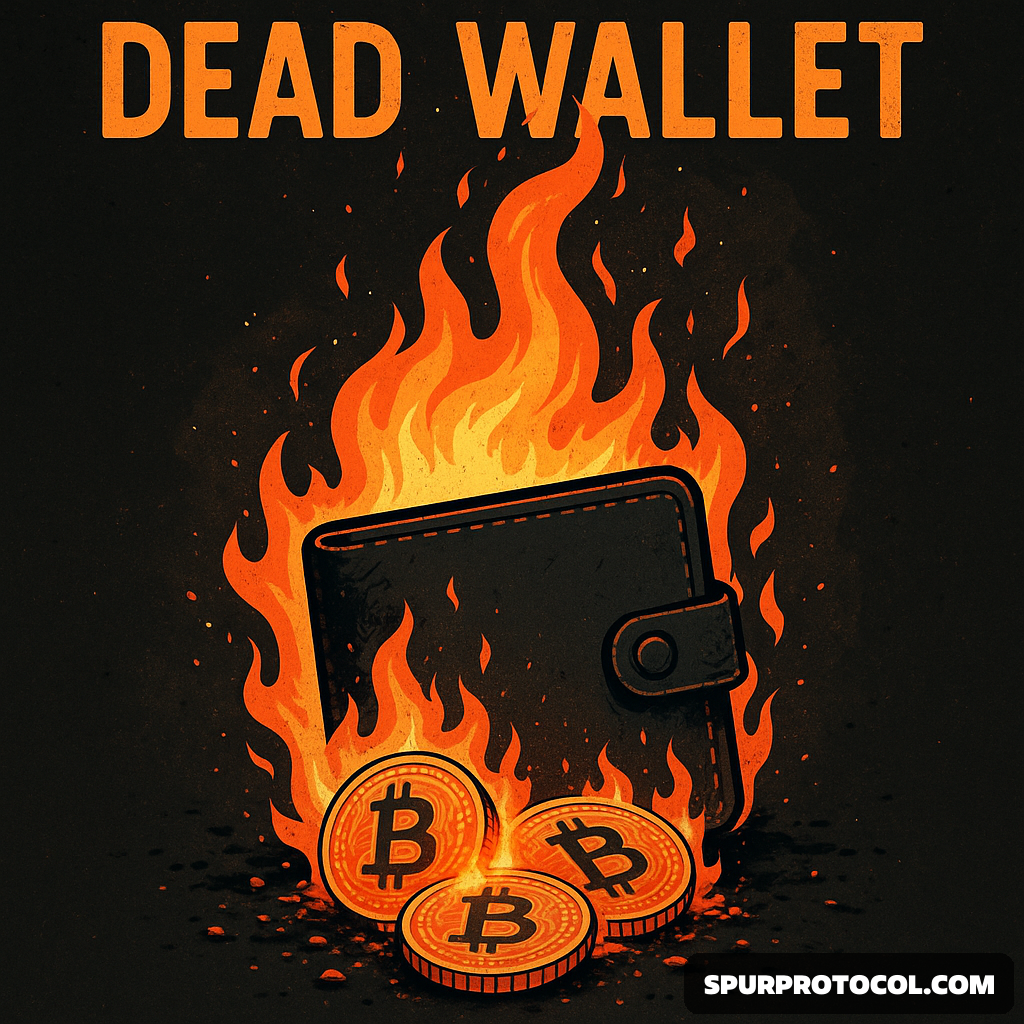1. What Is a Dead Wallet?
In crypto world, a Dead Wallet (also called a coin or a digital asset burning wallet or dead address) is a wallet that no one can access or control. It holds cryptocurrencies or tokens that are effectively removed from circulation because the private keys to the wallet are lost, destroyed, or never created.
In simple words:
Funds sent to a dead wallet are gone forever.
2. Why Dead Wallets Matter
Supply Control:
Some projects burn tokens (send to dead wallets) to reduce supply and make the remaining tokens more valuable.
Proof of Scarcity:
Dead wallets help show that a token is truly scarce, which can boost market trust.
Security:
Lost wallets containing a lot of crypto (like old Bitcoin wallets) reduce active supply, indirectly impacting price.
Mistakes:
Sometimes users accidentally send funds to incorrect addresses — creating unintentional dead wallets.
3. How Dead Wallets Are Created
There are several ways:
Deliberate Burns:
Projects intentionally send tokens to a wallet with no known private key, like:
0x000000000000000000000000000000000000dEaD (on Ethereum)
Lost Private Keys:
If the private key to a wallet is lost, the wallet becomes inaccessible forever.
Smart Contract Logic:
Some smart contracts auto-send excess tokens to burn addresses.
4. Examples of Common Dead Wallets
Ethereum Burn Address:
0x000000000000000000000000000000000000dEaD
Bitcoin Genesis Address:
The first-ever Bitcoin mined by Satoshi is often treated like a dead wallet because it was never moved.
Random Mistyped Addresses:
If someone sends tokens to a mistyped address with no owner, it becomes dead.
5. Characteristics of a Dead Wallet
FeatureExplanationNo Private KeyNo one can access or move the funds.PermanentFunds are stuck forever.Visible on BlockchainYou can still see the wallet and its balance publicly.IrreversibleNo recovery is possible.
6. How To Check if a Wallet is Dead?
No Transactions:
No outgoing transactions for a long time.
Known Burn Address:
Is it a famous dead wallet (like 0x000...dEaD)?
Analyze Activity:
Tools like Etherscan or Blockchain explorers help check if any movement happened.
Note: A wallet being inactive ≠ definitely dead. Maybe the owner is just HODLing.
7. Dead Wallet vs Burn Address vs Lost Wallet
TypeDefinitionDead WalletWallet inaccessible forever (either lost key or burn address).Burn AddressSpecial known address for burning (e.g., 0x...dEaD).Lost WalletPrivate key lost by mistake, rendering wallet dead.
8. Famous Dead Wallet Events
Ethereum Token Burns:
Many projects burn tokens during launches.
Bitcoin Losses:
Estimated 3–4 million Bitcoin are "dead" because people lost private keys in early days.
Crypto Scams:
Scammers sometimes send coins to dead wallets to fake "token burns" and pump prices.
9. Can Dead Wallets Be Revived?
No.
Once a wallet becomes dead (especially burn addresses with no private key created), it can never be revived unless someone magically finds the private key — which is basically impossible for random/created addresses.
10. Summary: Quick Key Points
Dead wallets hold crypto permanently.
They help manage supply, provide scarcity, and sometimes result from mistakes.
Famous dead wallets include Ethereum’s 0x...dEaD and Bitcoin’s early lost wallets.
No one can ever recover funds from a true dead wallet.
Possible FAQs on Dead Wallets:
Q: What happens if I accidentally send crypto to a dead wallet?
A: It’s gone forever. No recovery.
Q: How do projects burn tokens?
A: By sending them to dead addresses or using smart contracts that auto-burn.
Q: Can you sell or use crypto in a dead wallet?
A: No, because you can't access it without a private key.
Thanks for your attention.
